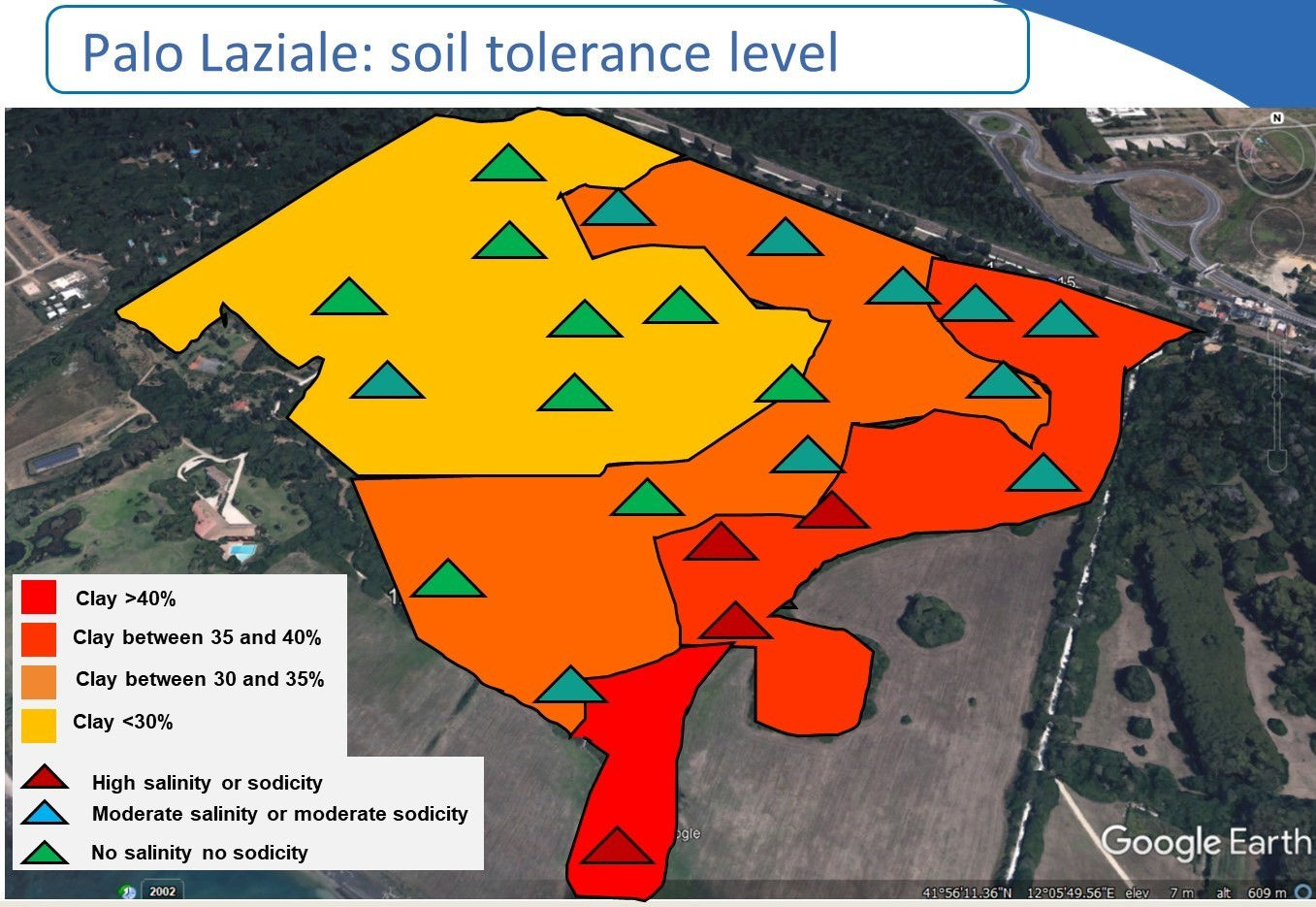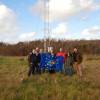Palo Laziale
Regarding salinity, the analysis confirms the presence of a high presence of salt in the soil of Palo Laziale as it was recorded for the first time in 2003. Nevertheless, the determined level of salinity/sodicity does not seem critical for plant growth as there are no soil pits showing either highly saline and sodic condition. In general, the salinity and sodicity of the soil appear slightly lower than in 2011 when soil surveys were carried out in the site for the last time. The results seem to conclude that the salty or sodic soil is not one of the most triggering factors of the forest dieback of Palo Laziale as:
a) the forest experiences a moderate salinity in term of a complex ecosystem;
b) a double presence of salt-sodium soils has never been observed in the pits.
As the regards of soil granulometry, a remarkable presence of clay is found, especially at a ground level of 75-100 cm, and with an increasing concentration moving from east to west. This information is very important for allowing permanence of the water on the ground, and it will drive the localisation of the new temporary ponds (Action C2).
In conclusion, the contribution of the pedogenesis to featuring and maintaining the priority habitat types (e.g. temporary ponds) the woodland is undoubtedly high. The exclusion of the soil salinity or sodicity as primary causes of the forest dieback might reinforce the role of the modified trends of temperature ranges, and in the minor extent of precipitation regimes, recorded in Palo Laziale over the last decades that have led to the extended occurrence of hot and arid springs (see results of Action A4). Clay has played an important role in the establishment of the forest in the area but, given this importance, can also easily become one limiting factor, for example, in the presence of water shortage for long periods (more than three or four months). This deserves further investigations.

Results of the action show that: a) with the only exception of soil pit 18, the % of clay in the tree soil pits (3,4,5) is <40%; b) no soil pits are either saline/sodic; c) only 2 soil pits are saline (3,5); d) only 2 soil pits are sodic (4,18); e) seven soil pits are moderate saline; f) nine soil pits are moderate sodic.
Nestos
Soil samples were collected from three sites: one from the western bank of river Nestos (site A), two from different sites along the eastern bank, “Voice of America” and “Lazaros”, respectively.
Clay concentration in the soil:
- In the site A, two ponds had 13-14% clay in the surface layer capable of holding water if that clay became impermeable to water.
- In the site B, “Lazaros”, the last surveyed by the project, the clay percentages in all samples were considerable (30-36% in the surface layers) and together with silt, they form impermeable layers, which can trap rainwater.
- In the site C, “Voice of America”, the main characteristic of the soils in the ponds is the sandy texture in four (out of five) of the soil pits. The river level is probably higher than the land level where the ponds are located, resulting in the rise of the water in the soil to form ponds and thus preserve hydrostatic balance.
- Soil samples were also collected from 10 sites from the riparian forest in Nestos close to the site A from both riverbanks. The variability of the properties of these soils was high. This demonstrates that riparian ecosystems are very versatile. Eight out of 10 samples had sandy texture and only two were loam and silt loam.
Salinity and sodicity in the soil:
In terms of salinity, there is no high value of either conductivity or ESP in site A.
In some pits of riparian forest and two ponds of site C and one pond in site B, the conductivity of the soil solution was found high (>2000 μS/cm). This was probably due to the dissolution of carbonate salts. In these same ponds in site C, there is a high exchangeable sodium percentage (ESP) (>15). The ESP appears high also in other samples but, in most cases, the reason for this is the low value of cation exchange capacity (CEC) and the presence of sodium carbonate salts. At the same time, in these two ponds in site C, the conductivity and ESP had high values in soils with a high CEC probably due to salt evaporation. The plants thriving there have been adapted to this level of salinity.















